Emotions Revealed |
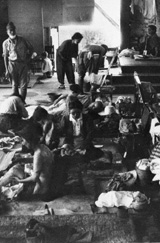
|
An Unquenchable Sorrow
These A-bomb materials were donated by families of the dead. Charred possessions of the dead convey the sorrow of losing dear ones.
On the evening of the 6th, the all-consuming fires died down to some extent, but flames still burned red around the city, lightening the night sky high into the heavens.
All night long, temporary relief stations reverberated with the groans of the burned and injured, calls for relatives, and cries for help. However, few of these victims were carried home alive by their family members. Most died before anyone could get their names.
The vast numbers of corpses were cremated in quickly assembled crematoria scattered around the city. Victims waiting for death vacantly watched this work go on.
|
1
|
|
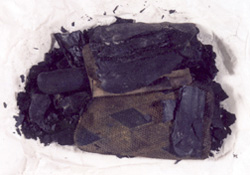 |
| 10 |
 |
11 |
|
 |
Wallet
Yutaka Kimura (then, 18)
Approx. 1,100m from the hypocenter
Donated by Hideo Kimura (younger brother)
Yutaka Kimura's father, Sadakichi, searched the city for Yutaka for days, but never found him. The last place he looked was under the rubble of the auditorium of Hirose Elementary School. The painful sight he encountered was Yutaka's head and torso. In the pocket of his shirt was the wallet Sadakichi recognized as having been bought by Yutaka's sister. Sadakichi thus identified his son and cremated him on the spot.
|
|
Wristwatch
Toshiko Nagawa (then, 22)
Approx. 1,200m from the hypocenter
Donated by Atsufumi Nagawa (younger brother)
Atsufumi Nagawa's older sister Toshiko was exposed alone at home in Nobori-cho. Her younger sister Setsuko and her father Yoshito tried to rescue Toshiko. Flames encroached on the collapsed house and prevented them from approaching. When Yoshito came back to the ruins at the end of the day, he found Toshiko's skeleton. This watch found under her arm was stopped at 1:00.
|
 |
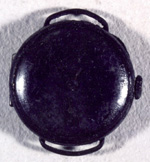 |
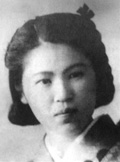 |
| 12 |
13 |
|
|
 |
 15
15 |
| 14 |
|
 |
Trousers, cap
Yoshiki Azuma
Approx. 2,200m from the hypocenter
Donated by Kikue Sugihara (aunt: mother's younger sister)
Kikue Sugihara's nephew Yoshiki Azuma, a first-year student at Hiroshima Prefectural Commercial School, was exposed during morning assembly in the schoolyard. He was burned over his entire body and taken into a Toyo Kogyo Company dormitory turned into a relief station. That is where his mother, Miyako, found him. She took him to a hospital in Kure City, where the family had evacuated, but he died on September 24.
|
|
Military sword, medical dictionary fragment
Jirobee Nishikawa (then, 39)
Approx. 1,700m from the hypocenter
Donated by Yasuyuki Nishikawa (child)
Yasuyuki Nishikawa's father, Jirobee, was exposed at Hiroshima Second Army Hospital in Moto-machi, where he served as military physician. When Jirobee still had not returned home on the 8th, his wife Hiroko and son Yasuyuki entered the city to look for him. The hospital had burned down to the foundation. Hiroko and Yasuyuki dug into the rubble of the area of the room where they thought Jirobee had been, but found no remains. They found only the military sword that Jirobee had been wearing and a burnt fragment of his German language medical dictionary.
|
 |
|
|
|
|
 |
Trousers, gloves
Sochi Asano (then, 12)
Approx. 800m from the hypocenter
Donated by Juni Asano (younger brother)
Juni Asano's older brother Sochi, a first-year student at Sotoku Junior High School, was exposed while demolishing buildings in the area between Hatchobori and Hakushima. On the 7th, his uncle found him at the foot of Tokiwa Bridge and took him to his own home in Hatsukaichi. Severely burned on the face, arms, and legs, Sochi died before the day was out. When Sochi's parents came from their home on Omishima Island in Ehime Prefecture on the 15th, their son was already ashes.
Sochi was wearing these trousers and gloves when he was exposed.
|
|
Rice bin
Sho Iida
Approx. 550m from the hypocenter
Donated by Sui Iida (daughter-in-law)
Seigoro Iida managed a lumberyard in Takajo-machi. On August 6, Seigoro escaped harm because he had gone out of the city overnight to take household goods to the evacuation site. His wife, Sho, was killed by the bombing at home.
After Seigoro's death, Sui and her husband Taiji found this rice bin in their attic. Sui learned from the relatives that the rice bin had been kept under the storehouse of the house where the family lived at the time of the bombing. No further details were known. The rice inside the can is carbonized and black. |
 |
 |
22 |
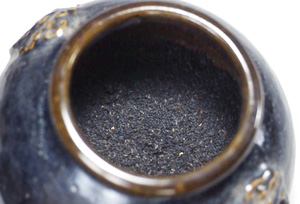 |
|
|

